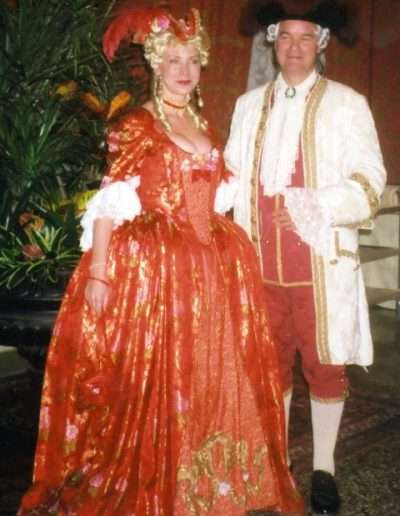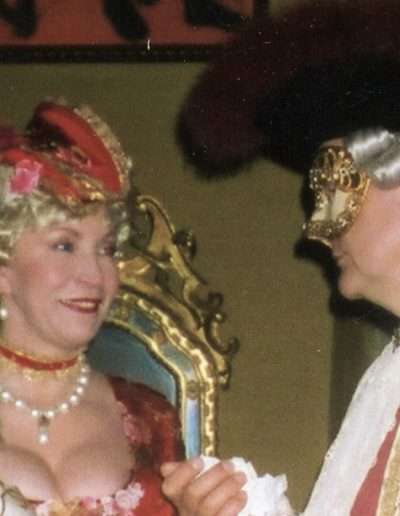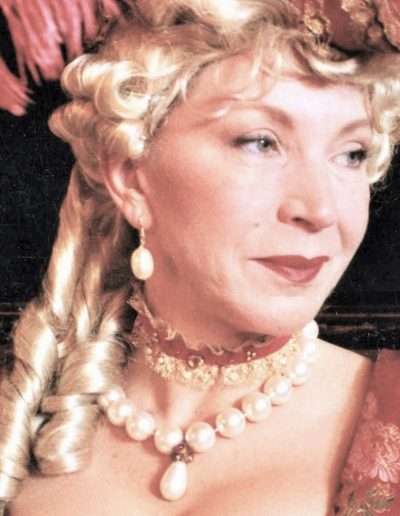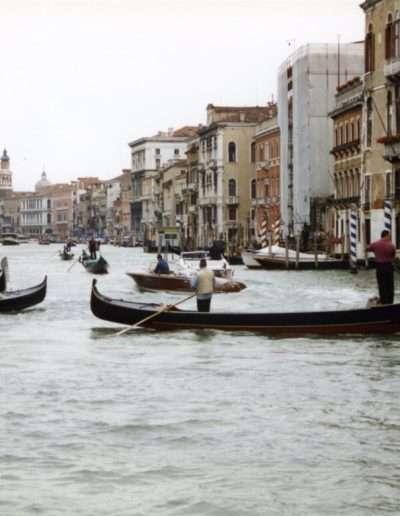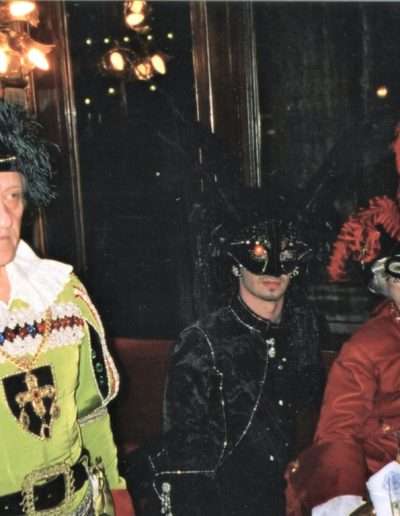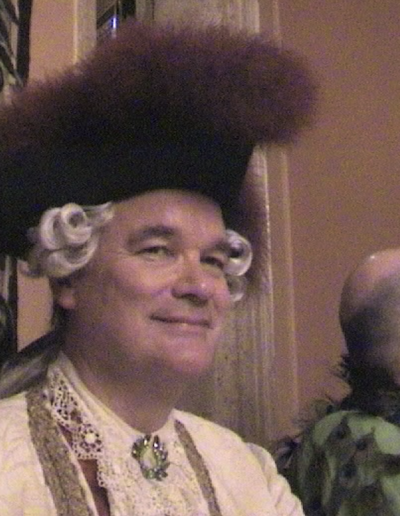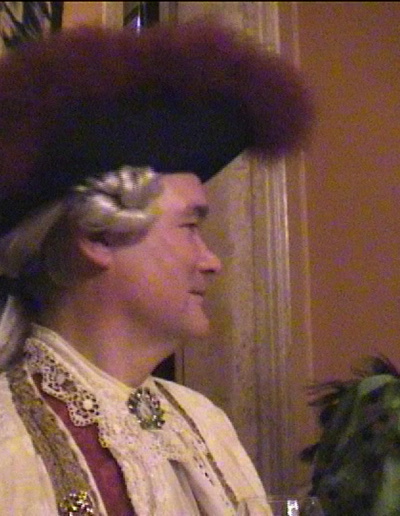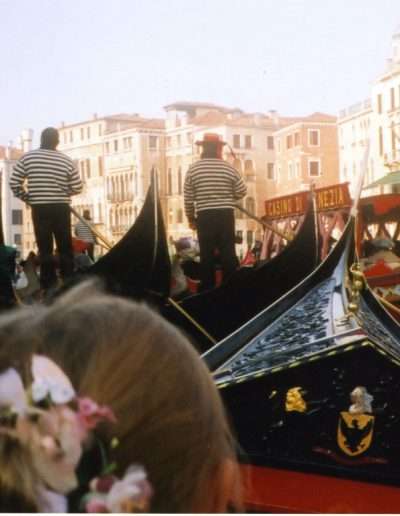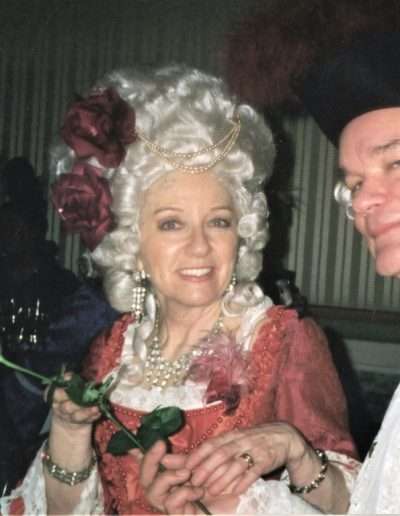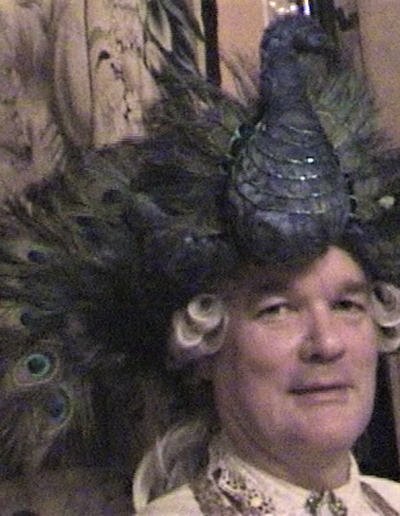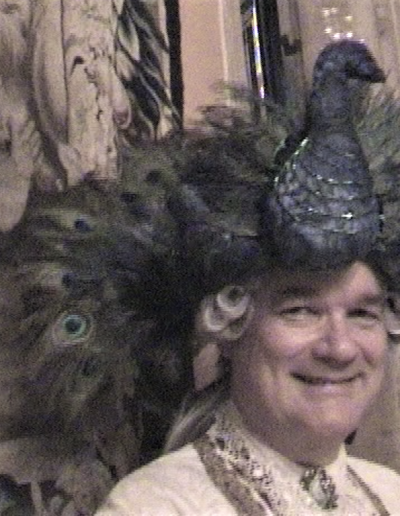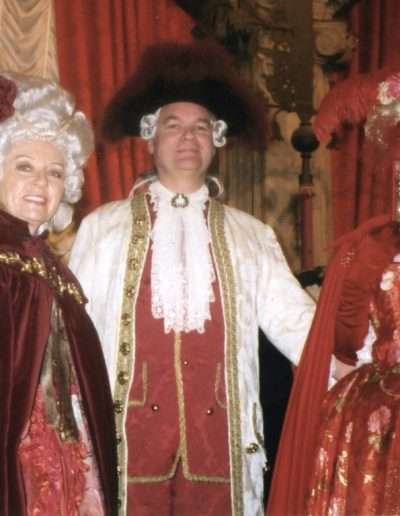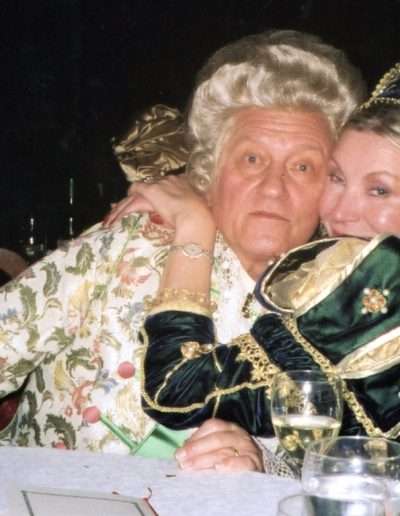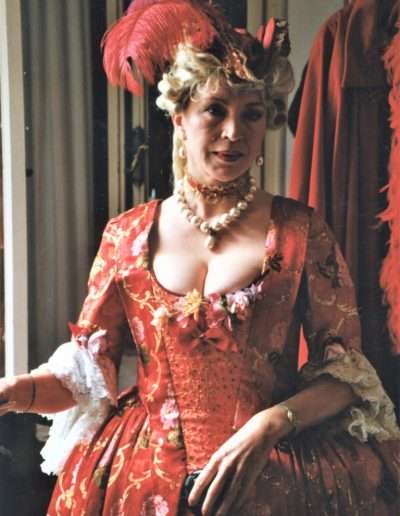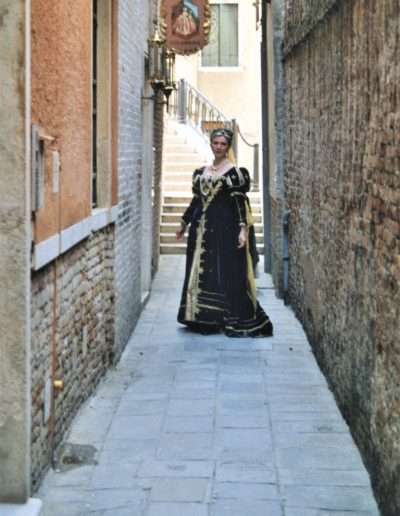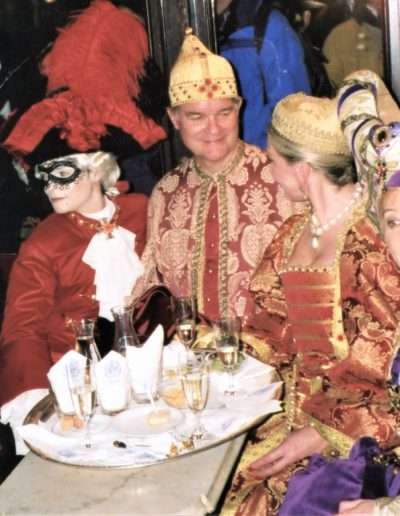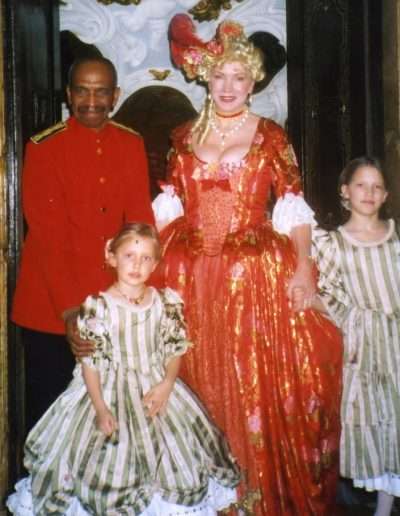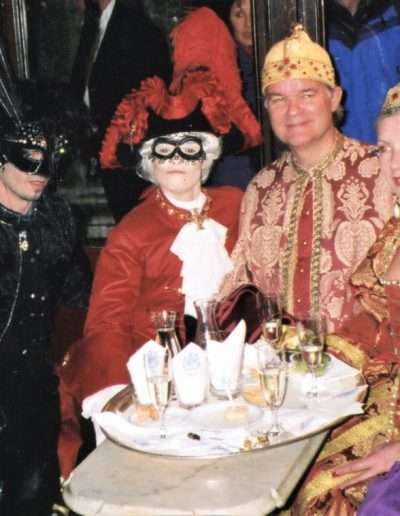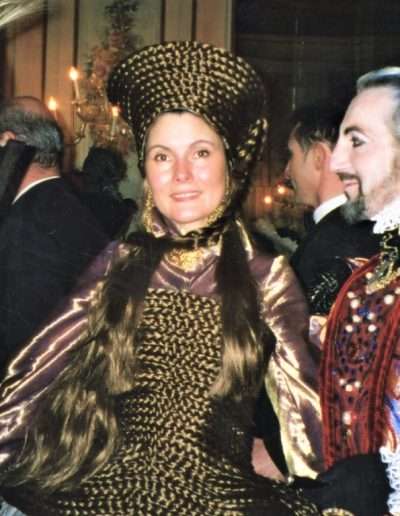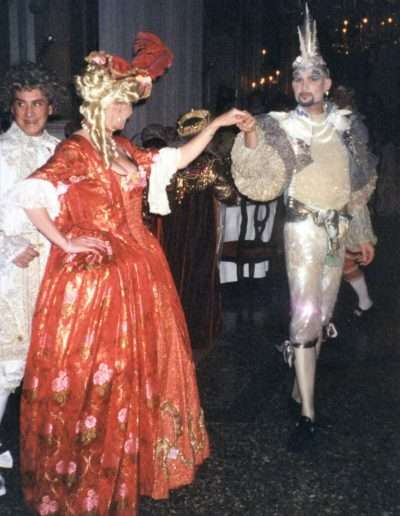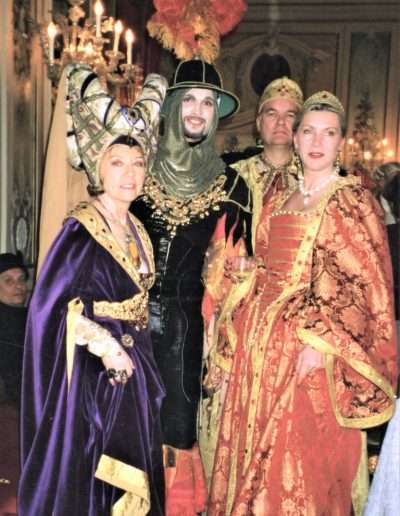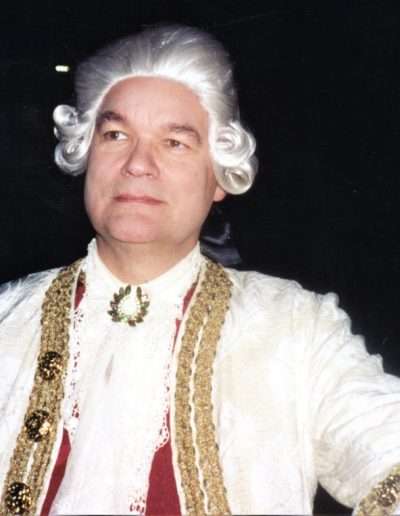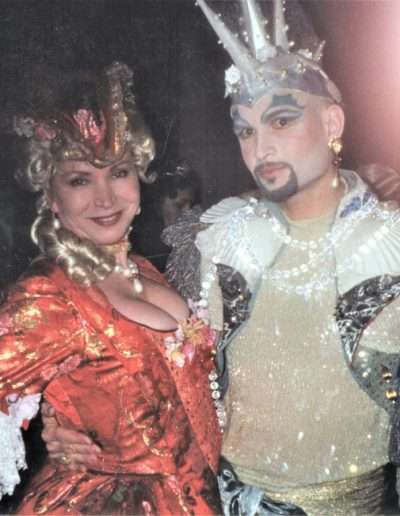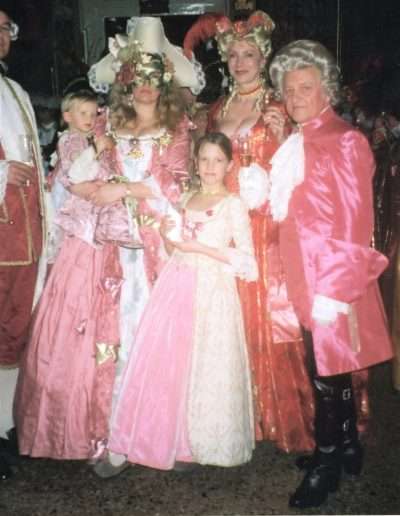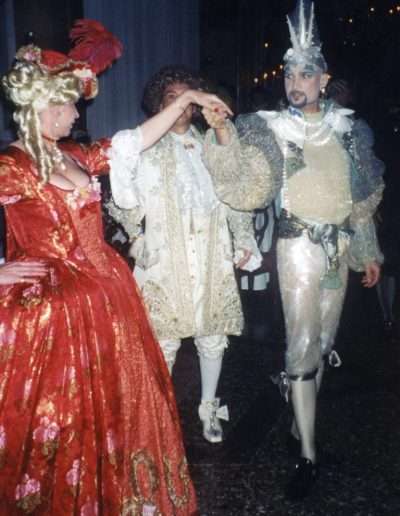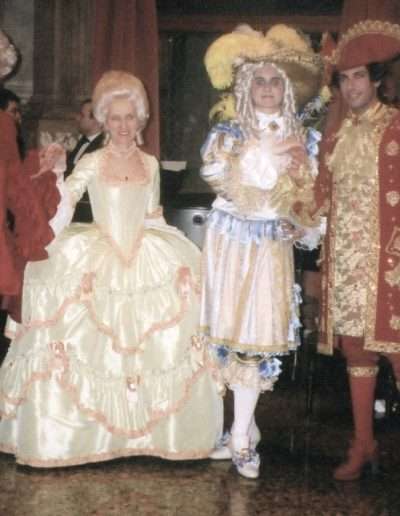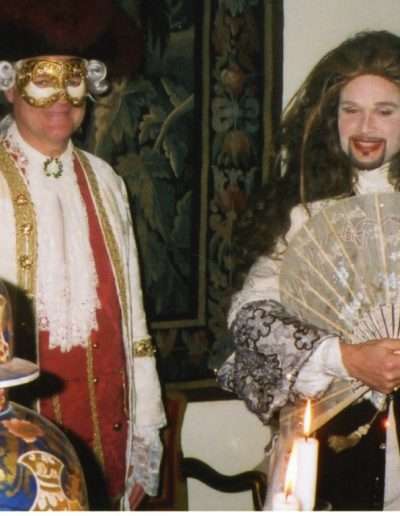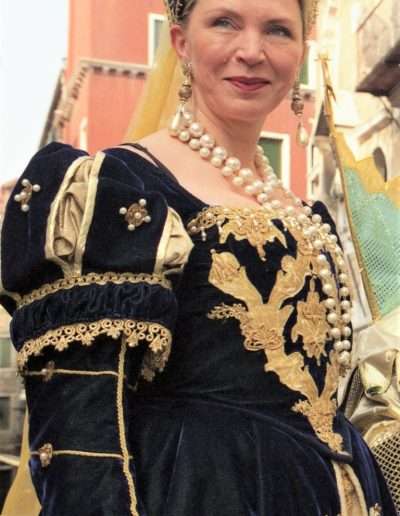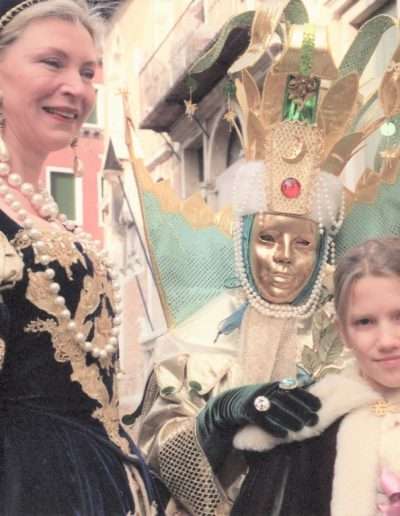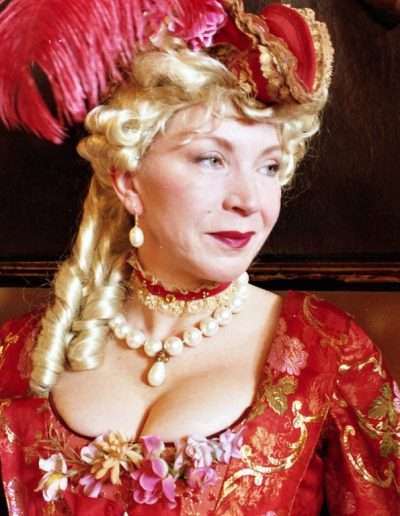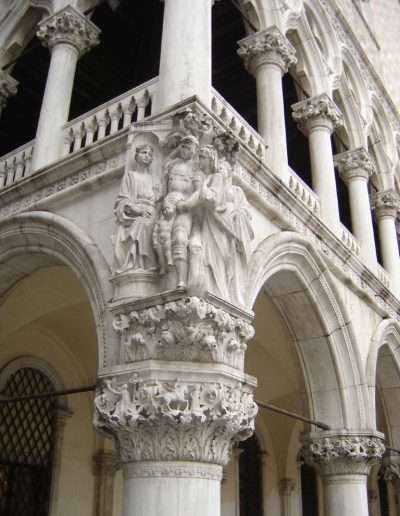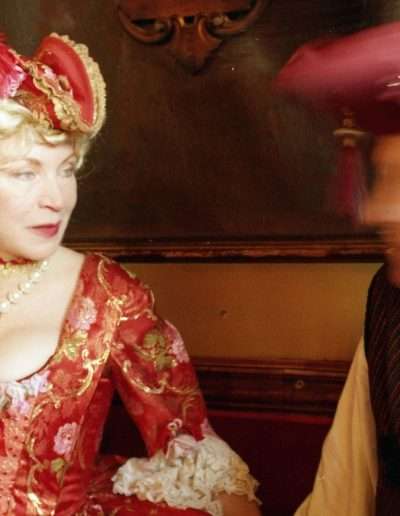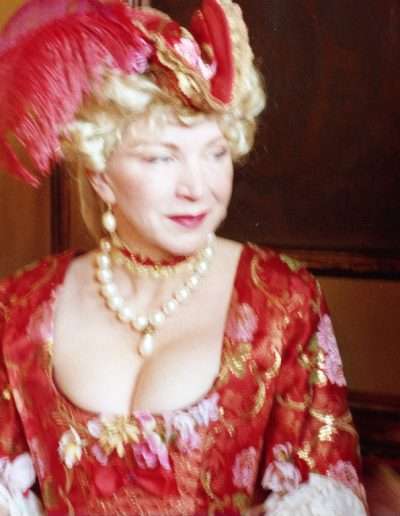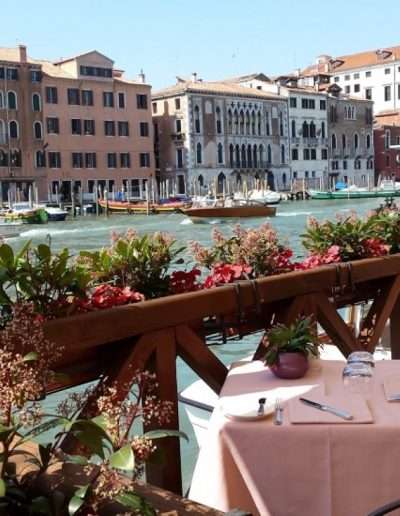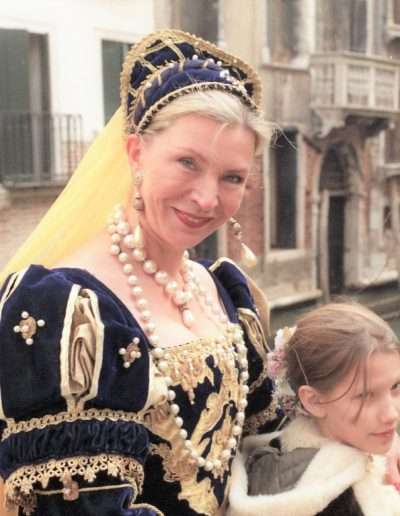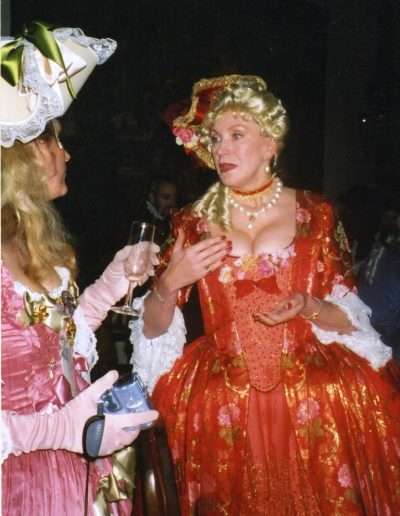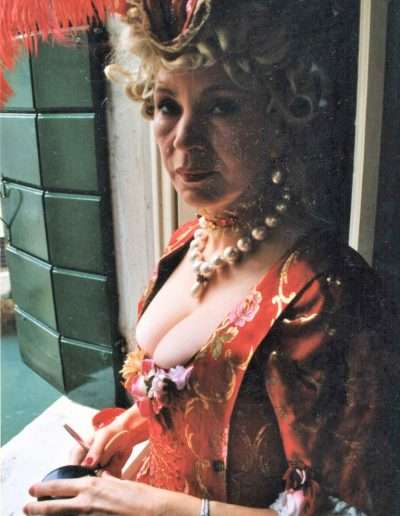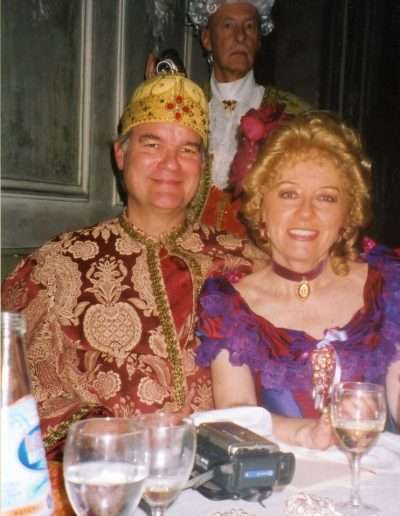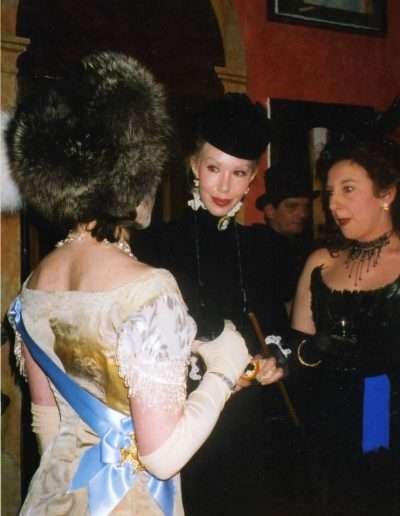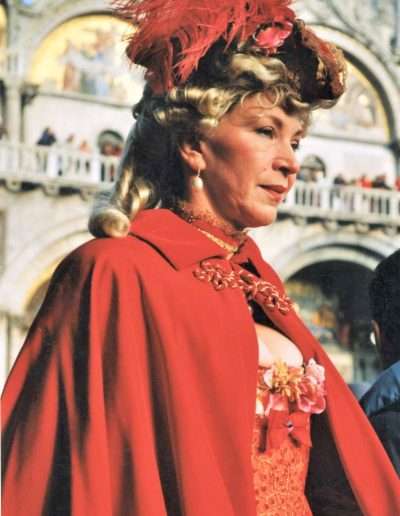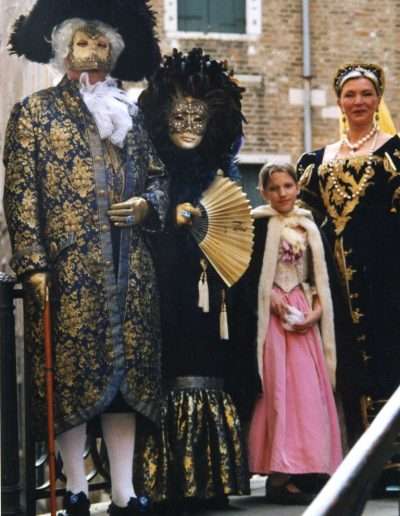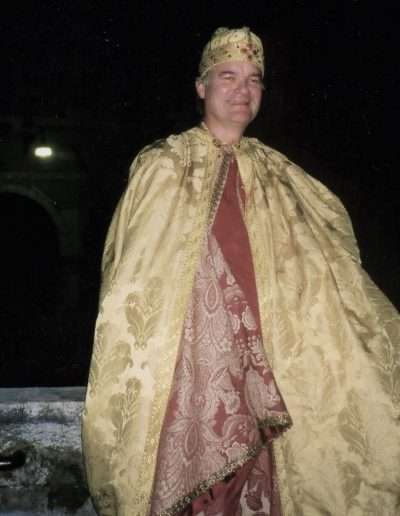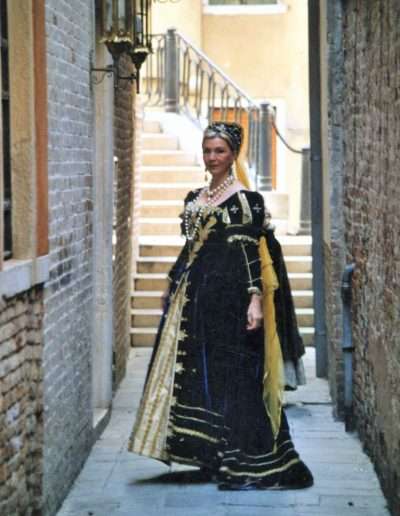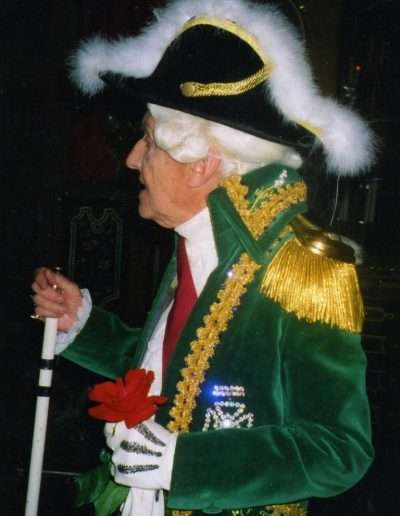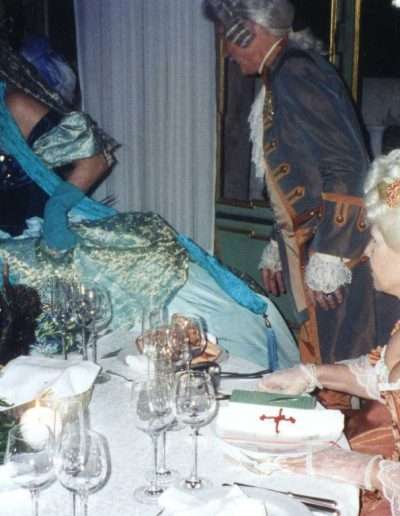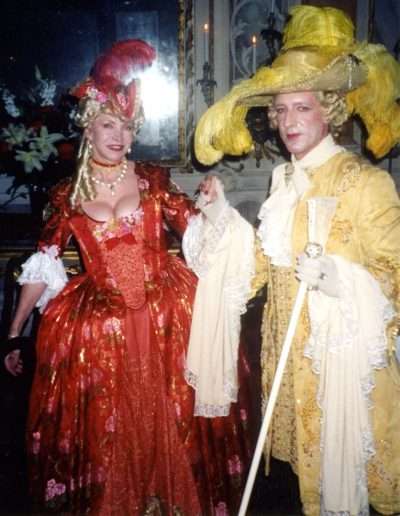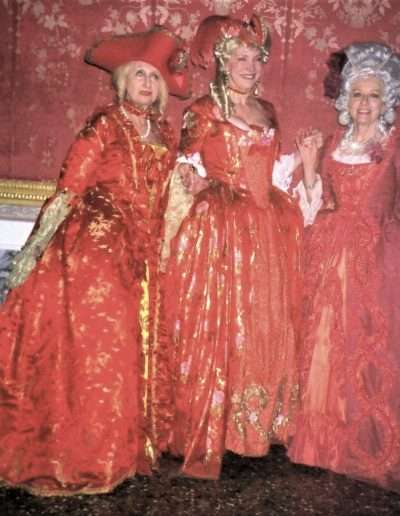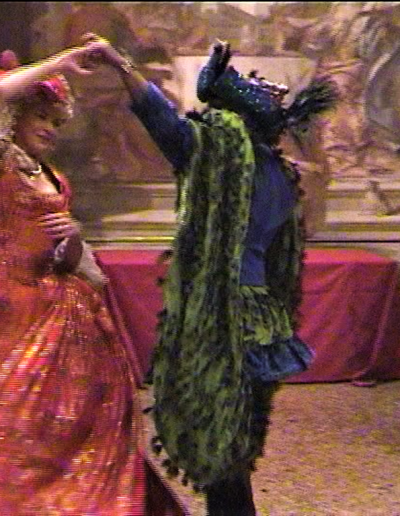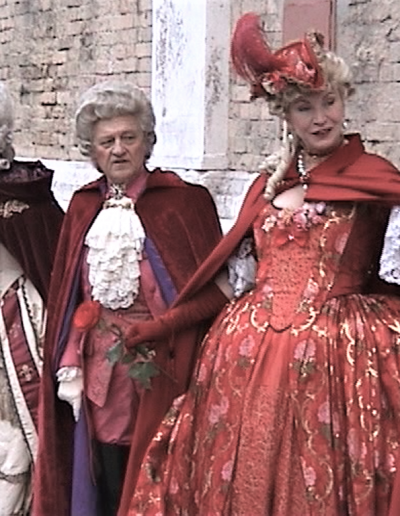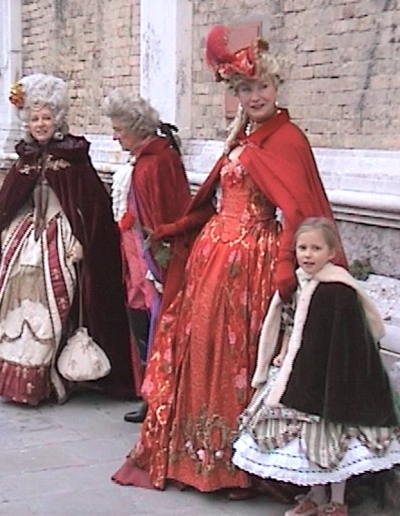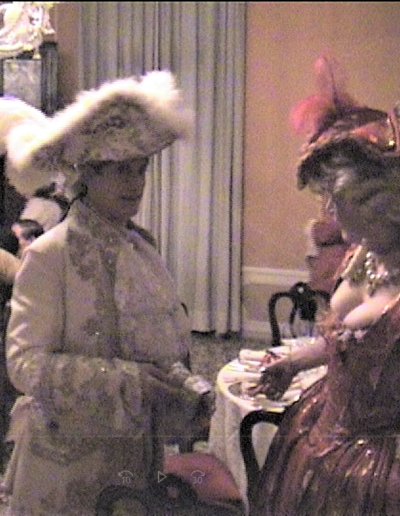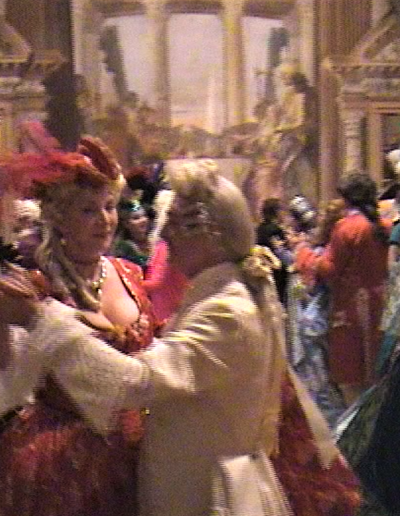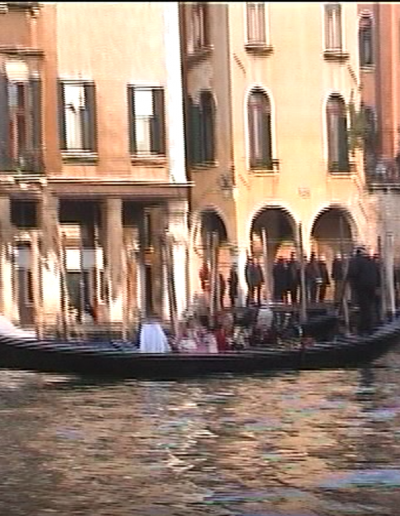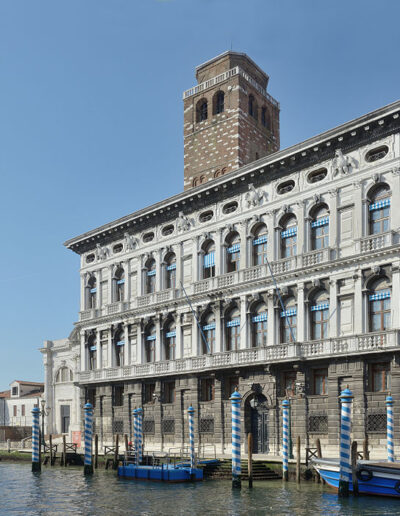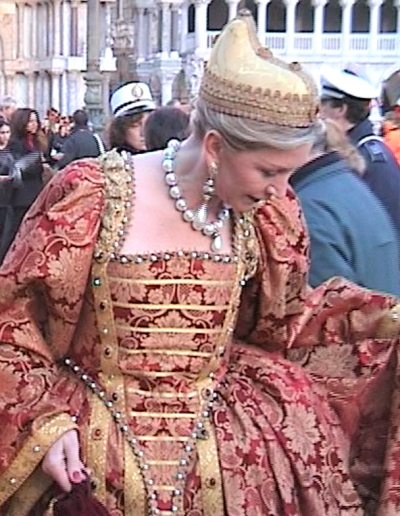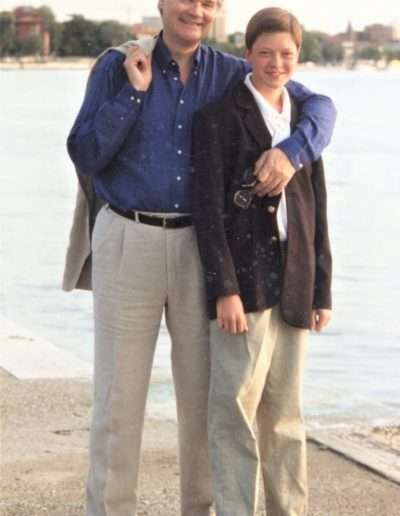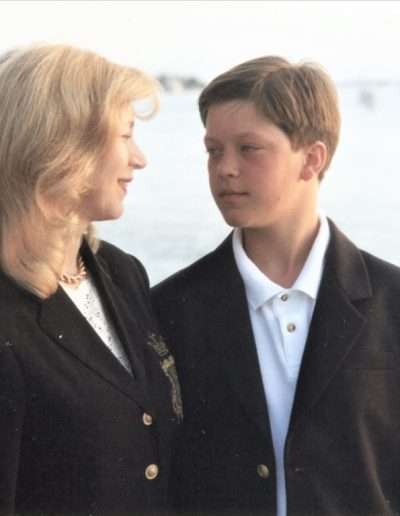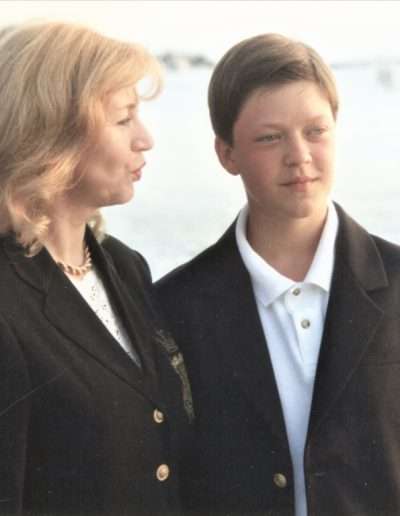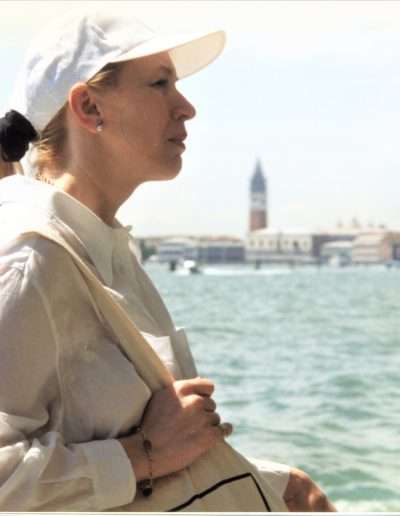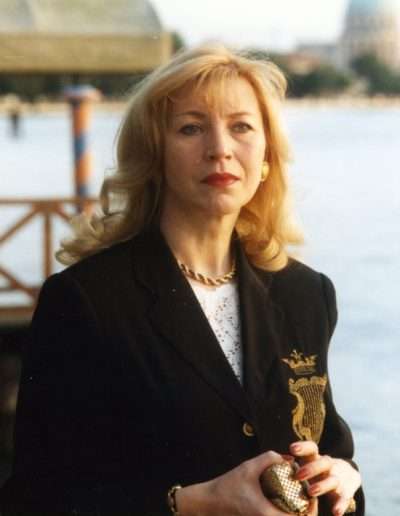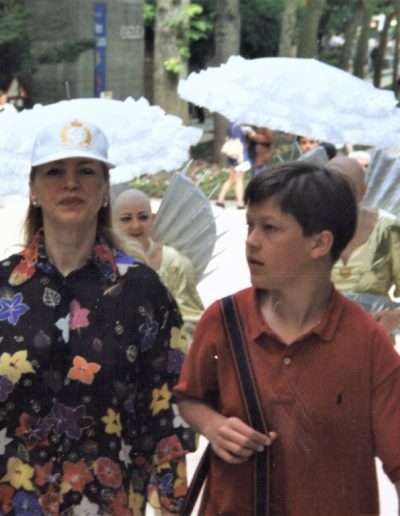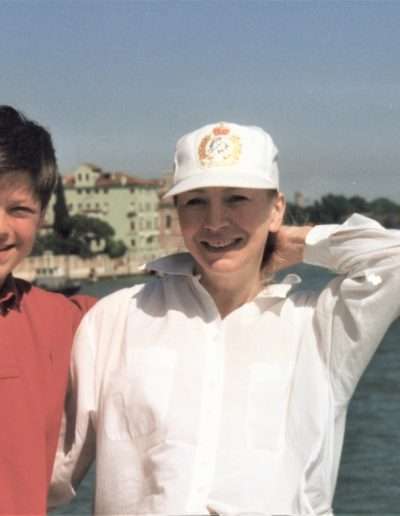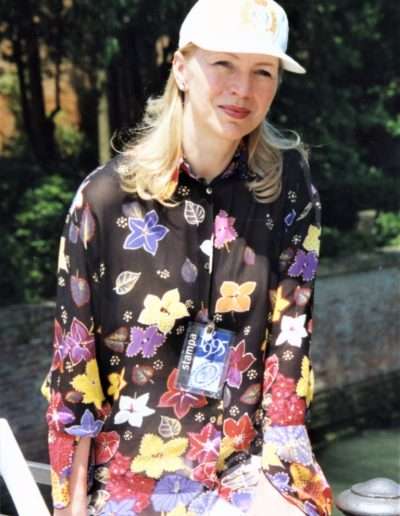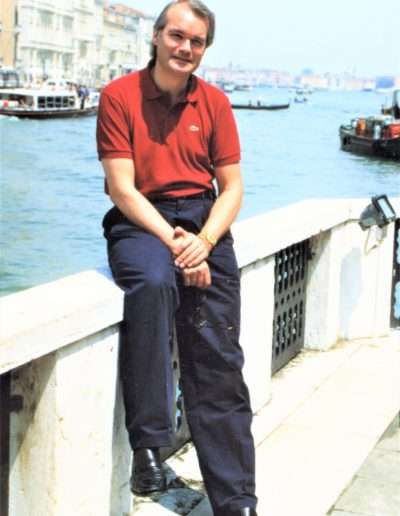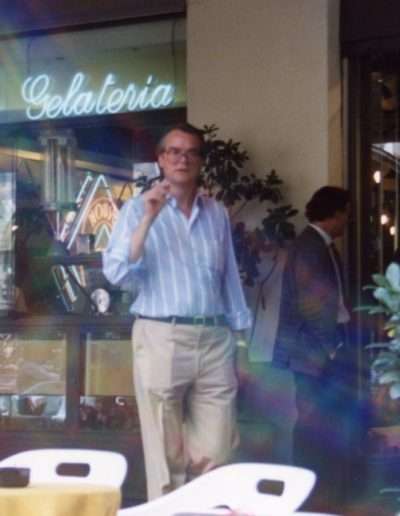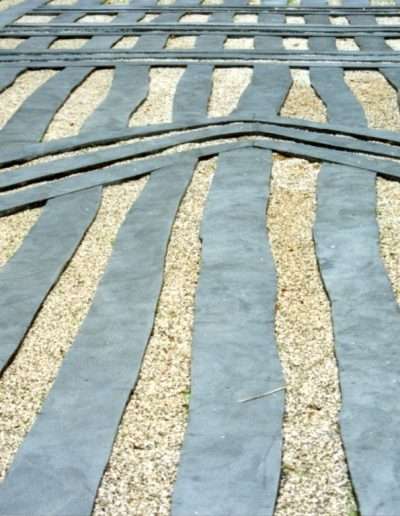Arrigo Cipriani of Harry’s bar – is still around; I recall Romana and my last drink there and speaking to him many times. He always headed to Romana, as she was a famous actress or something. He once said that Roma had come to Venice when we arrived. We had so many there through the years and a light meal before going to Fenice.
They say in Venice, “This is Venice, and the world is on the other side”. I have always admired how they developed their state, from dealing in salt to Marco Polo and even the money for 500 years the Duca.
They Are All Criminals in Venice!
One day Romana and I were buying something in a small tobacco shop in St. Mark’s Square in Venice. There were two people serving in the small shop, no doubt that most trades were directed towards a large amount of tourist passing by. A younger man and older lady were serving, most likely into her seventies, looking like an ideal old nanny with white hair, beautiful combed back, and a nice dress and smiling face. If one wanted for a film to show a nice old granny with a pretty face, warm and smiling, she would fit the bill. When she looked at you, she smiled politely with attractive spectacles on her nose.
This “dear” old grandmother lady served Romana and me. When it came to paying, I apologised, that I only had a 100 Euro note, although the payment was 6-7 Euro.
She smiled and told me this would be no problem. She took the banknote down from the desk and appeared to test the note against an ultraviolet lighting machine standing below the desk out of sight.
She brought the banknote up on the counter again and said in good English: “I am sorry to tell you that this banknote is fake”. I must have looked very surprised, and Romana told me immediately to give her another one, but I replied to her and said: “You know I happened to be a banker because I collect banknotes and also interested in numerology; I always look at the numbers on the banknotes I get.”
This morning I went to Banco de Roma main office here in Venice and received these notes, all 100 Euro notes. I know all the numbers, and the banknote I gave you is not the banknote you returned to the counter. If you kindly show me the banknote I gave you, I will tell you the number. If you do not do that immediately, I told Romana to get one of the policemen walking around outside.
The old lady looked at me with astonishment; she appeared shaken a little, then she looked down and bent over, saying: “Oh, I see your banknote here; I must have dropped it and made a mistake.” She then handed me my banknote with an apology. Romana had been silent and standing next to me, confounded and somewhat shocked to see the old lady’s behaviour, as it is evident that she did this trick many times a day. Otherwise, from where would see have the fake note?
We just walked out without the items we had been buying, because as I said to Romana, she would probably give me some fake notes back in exchange.
Because both Romana and I thought that this woman would do this all the time to naïve tourists, I wanted to file a complaint about her; I knew the police would just ignore me. Therefore, I went back to Banco de Roma, where I saw a young woman cashier who had served me earlier that morning. The same cashier who gave me the money earlier. There were four long queues of people at four tills and then her till where she had a closed sign. I went up to her, and when she saw me, she indicated that she would speak to me right away.
Since I knew she understood English, I briefly told her about the whole event and what had taken place in St. Marcus Square. When I told her about the shop, she told me immediately that she knew the place and indeed the old lady. She told me that the old lady’s son is a director of a major television station and said that the old lady should be ashamed of herself. Then she shouted out loud, not only for me to hear but everyone standing in line at the other tills, “All Venetians are criminals” in English and then said the same in Italian, looking at the people and their surprised faces.
With such a young woman’s attitude, one must hope that this will change, but not likely; the place is truly for exploitation of tourist, truly professional ribbing off tourists for hundred years. I believe that the old women could simply not stop doing her tricks despite being well off. She needs to go on, as this is one do in Venice.
Romana, Venice & Me
On the 3rd of September 1951, Don Carlos held a masquerade ball, Le Bal Oriental, at the Palazzo Labia. It was one of the largest and most lavish social events of the 20th century. The Greatest Ball on Earth by some commentators. It launched the career of the Venetian fashion designer Pierre Cardin, who designed about 30 of the costumes worn by members of the “dolce vita” who attended. Christian Dior and Salvador Dalí designed each other’s costumes. Cecil Beaton’s photographs of the ball display an almost surreal society, reminiscent of the Venetian life immediately before the fall of the republic at the end of the 18th century. The party was to be one of the last truly spectacular events in the famous ballroom.
Our friend, Anthony Marecco, attended this ball and told Romana and me about the event and his impression of this grand ball, which he considered the most spectacular event he had attended. I believe he was there invited by the Duchess of Devonshire, with his Brazilian wife. Little did we know that we nearly fifty years later danced in this great ballroom.
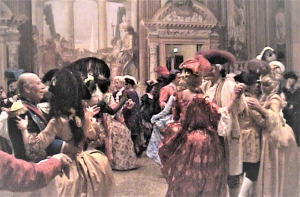
Romana and I danced, with lots of friends, on the 10th of February 2002, Romana’s Birthday, at Palazzo Labia. The invitation below

From the start of our love, Romana had, like I have had for years before, a special love for Venice, the Biennale, the food and the exclusive parties.
My first visit in 1959 gave me instant positive feelings for this special place. I have, throughout my life, many times considered buying a place in Venice; however, the prices were always too high, stupid, when you know that today these places cost 15-20 times more.
Romana and I knew many people who had beautiful places, where we sometimes could stay, but mostly we stayed in hotels. Some of these hotels became like locals. Later we stayed with several friends, in beautiful places, including palaces. Romana and I always indulge in Venice’s extraordinary history and its dreamlike ambience. Venice is one of the most picturesque and recognisable cities in the world. Venice has 116 islands, winding waterways, cobbled courtyards, beautiful architecture and tiny back streets, to Romana and me, Venice is one of the most picturesque and recognisable cities in the world.
Sadly all this beauty comes at a price; its endless charm means tourists regularly outnumber locals, meaning you have to share the many sights with several other people.
Romana and I hated crowds and always tried to avoid the tourists; that is why we never when in the high season, early spring, late autumn when the heat is less intense, and you may just get that museum to yourself. We liked October, and even February, although grey, but apart from the Carnival time, there are not so many people and the food on the market is so much cheaper.

Through the years, we have travelled from cars to trains to aeroplanes and boats to Venice. Mostly, we just drove to Venice in 3-4 hours comfortably from home, via Alexandria and Verona, sometimes stopping for a nice lunch on the way.
One place I always took time to visit was Paolo Olbi’s shop. Through the years, seeing all the hand-printed paper, fine fabrics and vegetable-tanned leather with designs inspired by everything from Liberty prints to Byzantine patterns and classical Italian style, always brought me back to my childhood. I learned as a child to create beautiful patens on the paper, by floating paper on the surface of water-absorbing oil paint creating interesting and unique patterns. Normally seen in book bindings. In 1979, I had plans for them to make my family photo albums and was placing the order – that never happened.
In the late 1990s, we got to know people who establish the International Association for the Carnival, an exclusive group of people who would spend thousands a year on very fine costumes, creating the most exclusive dinners and balls during the Carnival season. Some people we knew would spend €40-50,000 on new costumes each year.
Balls are held in the most beautiful Venice palaces as Labia Palace, Pisani Moretta Palace, Vendramin Calergi Palace, Donà delle Rose Palace. Romana and I went to them all these beautiful and historic palaces, enjoying the best food and drink, all with the most outstanding service and waiting. The service we had on Romana’s birthday, was the best ever, our glasses were always full and we never saw the waiters. I said at the time that even the Queen could not have such a good and private table service.
The International Association for Venice Carnival is a non-profit-making association with members who come from all over the world. Membership is bound to a maximum number that cannot be increased for planning reasons: space in Venetian palaces is rather scarce and does not extend to an excessive number of members.
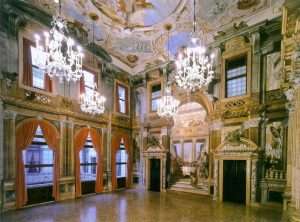
Romana and I always indulge in Venice’s extraordinary history and its dreamlike ambience. Venice is one of the most picturesque and recognisable cities in the world. Venice has 116 islands, winding waterways, cobbled courtyards, beautiful architecture and tiny back streets, to Romana and me, Venice is one of the most picturesque and recognisable cities in the world.
Venice is a city very much looking forward as much as looking back in history. When you think that the genius of a city built on water, with huge marble churches based upon posts driven into mud banks.

From the Greatest Ball on Earth in September 1951, Palazzo Labia, Venizia

The Lido
We once stayed in Hotel Excelsior Venice, at Venedig-Lido, a real old-style Italian hotel, we had an apartment for a week and walked early in the morning along the beach, with no people around. Alberoni Beach is situated in a nature reserve, at the south end of Lido, this beach feels like a world away from the bustling city life. Very few people know that such a lovely beach is so close to Venice and the flock of tourists. When we returned to the hotel for breakfast, we sometimes had to wait, but breakfast was an ideal start to the day.
So much more to follow..….

The Italian say com’era e dov’era
(exactly how and where it always has been), but that does not apply to Venice; it is continuously changing.
The Venice Biennale
My first visit to this special art event was in 1966 when we operated AXIOM Gallery in Mayfair. I should have liked to have gone to 1964, as this was the launch of Pop art. However, later I attended with Romana both the 100th-anniversary exhibition and the 50th exhibition in 2003.
We always looked forward to going to the Biennale, despite the many people attending. The only problem, we had to reserve places in restaurants we liked. So we had some serious planning to do, every time.
During the years, we met many famous artists and curators. We sometimes run into them later, as Venice is rather a small village, or joined them for a great meal and lots of wine.

Interestingly Romana despite her liking of the classic masters, soon became quite an expert as to contemporary art. Romana assisted at the openings and special events in the Mayfair galleries, moreover, found the girls to work daily in the galleries and assist. When we attended graduation shows, Romana had faster than me a sense of what art was interesting, it always took me time to get in all this art, consume it, whereas, Romana, had a great instinct for the artwork.
Romana’s first visit to the Biennale was in 1990 and later the second in 1992. A three-year gap was left afterwards to make sure that they coincide with the 100th anniversary of the Biennale. We both went together with Alexander.
For the Centenary exhibition in 1995, the Biennale promoted events in every sector of its activity: including the 34th Festival del Teatro, the 46th art exhibition, the 46th Festival di Musica, the 52nd Mostra del Cinema. Considering we only stayed a week, it was impossible to go to most events, also Alexander, at an age of 14, was just too young to appreciate the arts.
In 1999 and 2001, we saw a larger representation of artists from Asia and Eastern Europe and more young artists than usual and expanded the show into several newly restored spaces of the Arsenale.
The 50th edition, in 2003, had a record number of seven co-curators involved, including Hans Ulrich Obrist, Catherine David, Igor Zabel, Hou Hanru and Massimiliano Gioni.
The 51st edition of the Biennale opened in June 2005, curated, for the first time by two women, Maria de Corral and Rosa Martinez, this was the last Biennale for Romana and I. China was the first time attending.
In addition, to the Biennale, Romana and I went to Documenta in Kassel Germany every 5th year, when it was held. Some years we made it to the very commercial exhibition Art Basel. Sadly, to few through the years.

The formal Biennale is based at a park, the Giardini. The Giardini houses 30 permanent national pavilions. Alongside the Central Pavilion, built-in 1894 and later restructured and extended several times, the Giardini is occupied by a further 29 pavilions built at different periods by the various countries participating in the Biennale. The pavilions are the property of the individual countries and are managed by their ministries of culture.
Initiated in 1980, the Aperto began as a fringe event for younger artists and artists of a national origin not represented by the permanent national pavilions. This is usually staged in the Arsenale and has become part of the formal biennale programme.
Countries not owning a pavilion in the Giardini are exhibited in other venues across Venice. The number of countries represented is still growing and both Africa and Idia have not artists at the Biennale.
La Fenice
A place I had enjoyed before Romana and we both went to a few times during the early 1990s visits, all, after enjoying a great meal, sometimes a light one at Harry’s Bar, as we most likely had a great lunch and siesta.
The Teatro La Fenice in Venice is one of the most important opera houses in the world. No less than five operas by Giuseppe Verdi were premiered here between 1844 and 1857.
On the night of January 29, 1996, a fire raged in the centre of Venice, Italy, and by morning it had consumed its victim: the Teatro La Fenice, often called simply La Fenice. Luckily, the fire did not travel beyond the walls of La Fenice, but the destruction was profound.
One of the great opera houses of Europe was gutted, and the city of Venice lost a treasured civic landmark. The fire of 1996, a tragedy on a huge scale. But for the Teatro La Fenice, this catastrophe was yet one more chapter in its long and strange history.
Translated from Italian, La Fenice means “the phoenix,” a reference to the mythological creature that is reborn from its ashes after it is destroyed. Long before the fire in 1996, La Fenice acquired this name because of another fire, one that burned down the Teatro San Benedetto in 1774.
A group of ex-proprietors of the San Benedetto decided to sponsor the creation of a new theatre and invited proposals for its design. Completed in 1792, La Fenice was well received and greatly admired by the public and the media.
Only a few years after the Fenice was completed, in 1797, the French army, under Napoleon’s command, invaded and occupied Venice, placing it under both French and Austrian control. Although the ownership was retained by those who had built the theatre, it in effect became a state theatre. In accordance with this, in 1807, La Fenice played host to the now-Emperor Napoleon; a special loggia was built to accommodate him, and the theatre was decorated in the imperial colours of blue and silver.
Further changes to the theatre were made in 1828, including the hanging of a new chandelier and additions of painting and sculpture. All this work put into the Fenice was destroyed on December 13, 1836, when the theatre caught fire, reputedly sparked by a newly installed Austrian stove. The fire burned for three days and nights and continued to smoulder for another 15 days. On the heels of this disaster, reconstruction began quite quickly, under the direction of the Meduna brothers, Tommaso and Giambattista.
The theatre is a must for visiting Venice.
I like ballet, both the classic and contemporary, but Romana was not so enthusiastic as I was, nevertheless, we saw a few ballets in La Fenice and because it is such a small and intimate place, we did like the performances. Unfortunately, many major performances at the theatre were when we were not in Venice.







